From Italy to Brooklyn, a one-of-a-kind woodworker builds off of a lifetime of experience to painstakingly bring brownstones back to life.
Electric saws are whirring and lacquer is slowly drying as Vincent Battiloro walks carefully through the corridors of 201 Hancock Street in the Bed-Stuy neighborhood of Brooklyn. Battiloro eyes every detail as his crew finishes up work on this three-story single-family home. Built in 1910, like many of the grand homes in this part of Brooklyn, this Victorian-style brownstone has been through many lives over the past century.
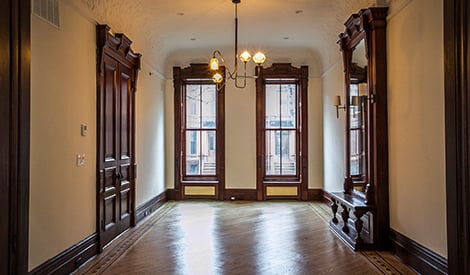
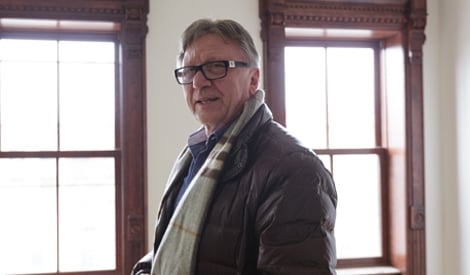
Originally built for a well-off turn-of-the-century family, over the decades it had been converted to a four-family house. A century’s worth of quick renovations and hasty paint jobs had covered up most of the home’s original grandeur. After purchasing the home, Dixon Projects set out to revive as many of the original details as possible. Despite the state of the place, Battiloro could tell that the original historic bones were still there.
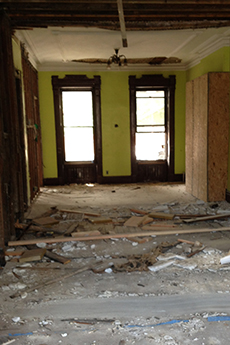
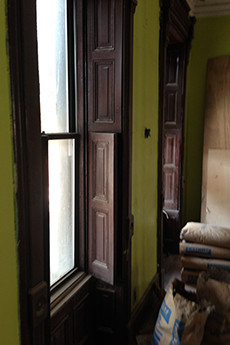
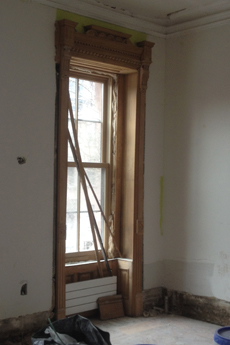
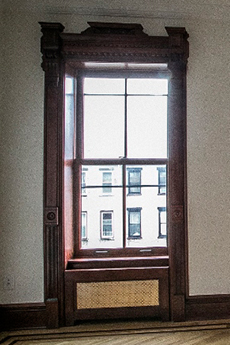
“Most of the original woodwork was right here,” he says. “It was just in horrible shape, and buried under all kinds of things.” Door frames were splintering, segments of banisters were keeling over, and quick paint jobs covered up once-majestic mantelpieces.
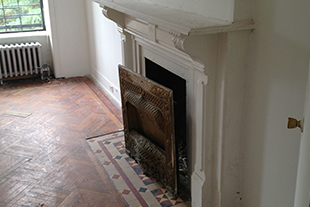
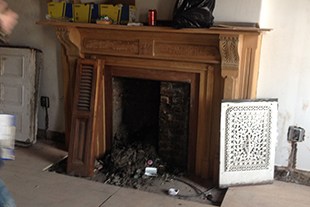
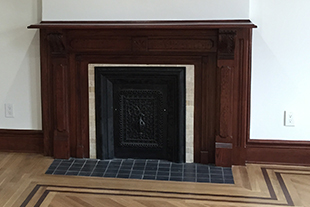
The owner of Brownstone Wood Restoration, Battiloro was tasked with bringing all of the beautiful original architectural wood details in that house back to their original state. In this case, that meant taking almost all of the wood off the walls and stripping it bare.
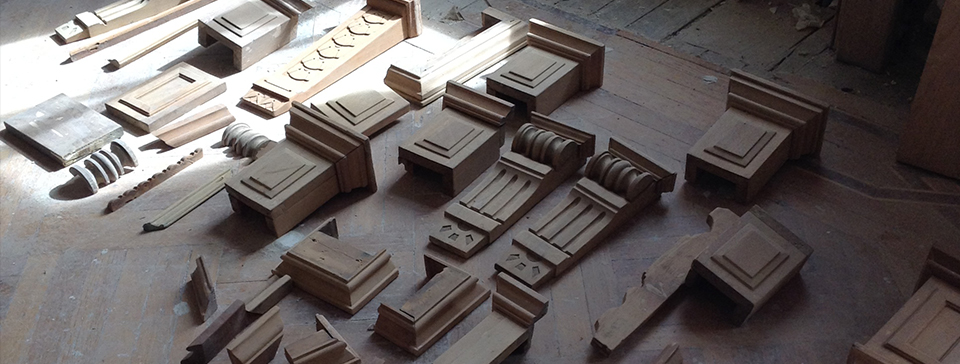
Battiloro and his team removed everything from door frames to banisters and mantles, applied a solution to strip back all of the paint or whatever else was covering them up, sanded the pieces until they were essentially bare, then filled in any holes and cracks that had developed over the decades. The final stage was a careful staining and lacquering process designed to give the house a cohesive aesthetic, so that the three different woods originally found here—cherry, oak and mahogany—would all complement each other.
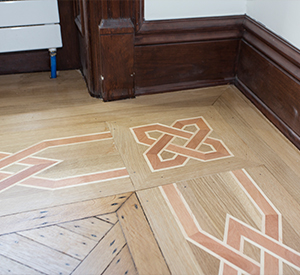
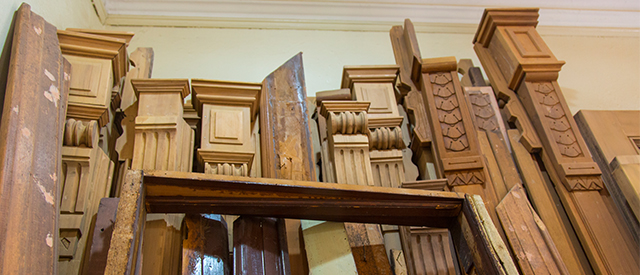
“We’re basically taking this place back to its original state,” says Battiloro. “A lot of people might just paint over all of this again. Or some restorations just take the paint off, but they don’t bother to get all the paint out of the crevices—they just go over it with some varnish. But that doesn’t look anything like this will.”
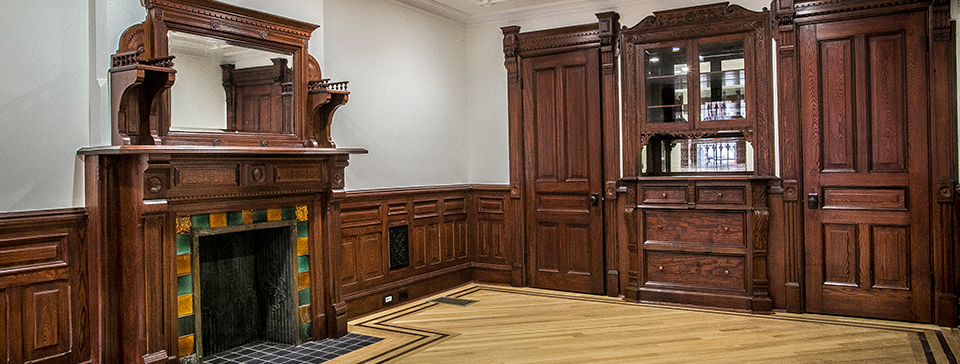
Vincent Battiloro knows of what he speaks. “I was doing this when I was 14 years old,” he relates. “Now I’m 73 and still doing it.”
His passion for woodworking began while growing up in Italy. At 14, he became an apprentice to his father’s best friend, who was known for making the finest doors and windows in town. After studying under a second master craftsman, he immigrated with his family to America in the 1960s and began practicing his finely honed craft here. At first he worked on a smaller scale, carefully restoring furniture pieces, before working his way up to large-scale brownstone renovations. Since the 1970s he has worked on dozens of homes throughout Brooklyn neighborhoods like Park Slope, Bed-Stuy and Cobble Hill, as well as Harlem and elsewhere in the New York City area.
The brownstone at 201 Hancock was a special treat for Battiloro, because it’s rare that an owner is dedicated to spending the time and money needed to bring a home back to its original glory. “They really wanted to capture what it was like years ago,” says Battiloro, “to show what it meant.”
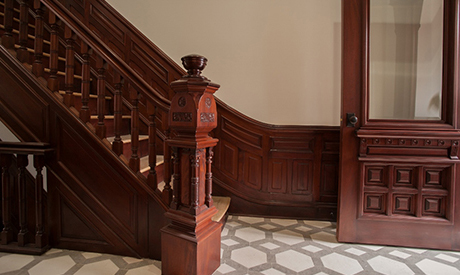
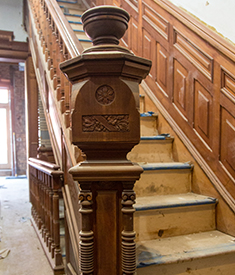
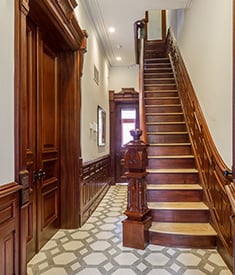
The original design of the home featured a bevy of intricate Victorian-style carvings over the doorframes, around the windows, and stretching across the mantelpieces. Battiloro and his team of skilled workers set out to clean and restore these pieces when possible, and to recreate them when not. Many of the doors were unfortunately not salvageable, and in those cases the team replicated new doors to match the original frames.
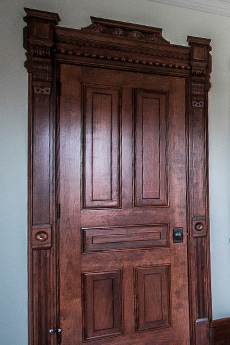
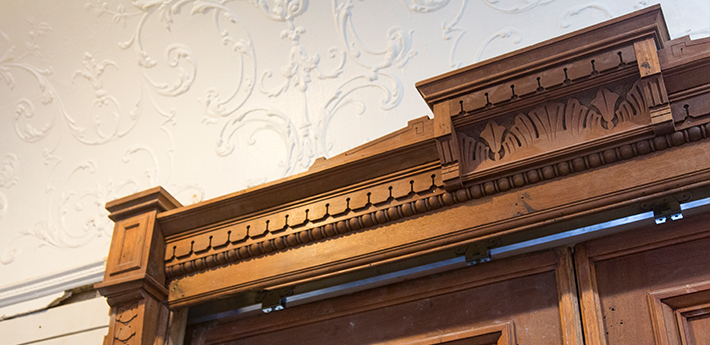
On the third floor of the house, years of use as a single-room occupancy residence had left the entire level deteriorated. Doors had multiple locks drilled into them, and much of the woodwork was falling apart. Their solution was to completely replicate the second floor below, using it as a guide and recreating all of the complex woodworking from scratch. The second floor featured a majestic archway spanning one room, so Battiloro’s team took that apart and figured out how to replicate it piece by piece on the floor above. Where baseboard molding was salvageable they restored it; when not they added new molding to match what was found downstairs. Everything down to the elegant new radiator covers was designed to match the original 1910 aesthetic. In one instance, they even had to make a special knife in order to shape the hard-carved flower decorations lining an archway so as to match the style they were made in 105 years ago.
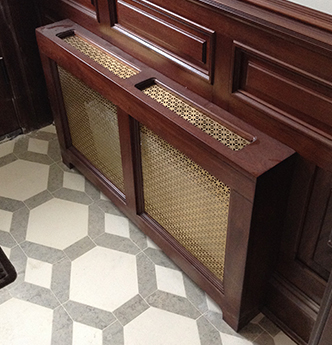
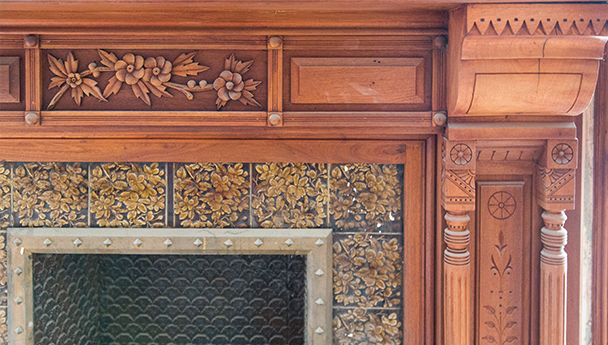
As he walks through the finished top floor of 201 Hancock, gushing about the various “treasures” discovered throughout, Battiloro displays a little of the wonder that originally attracted him to woodworking as a young teenager. “Look here at these shutters,” he says, pointing to the elaborate wood-carved window coverings. “These were all actually here, but there was plywood covering up each of them, and they were all painted over. When we took everything apart we found them. They were here—100 years old—and whoever was living here didn’t even know it.”
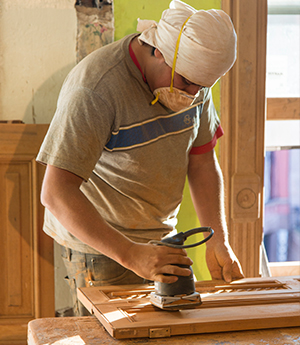
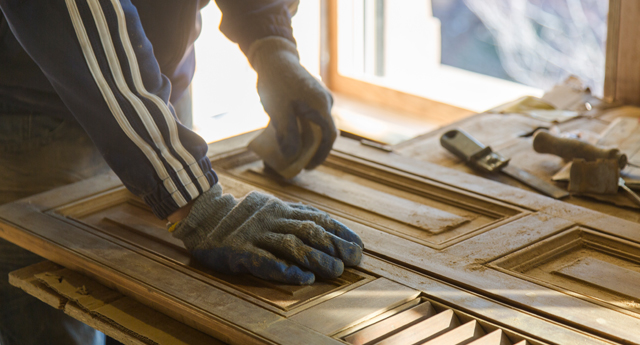
Discoveries like that keep the job interesting day after day, even after 60 years in the business. “I am always on the job site with my staff, taking pride in the completion of each piece,” he says. “It’s the same now as it was when I was just beginning at 14.”
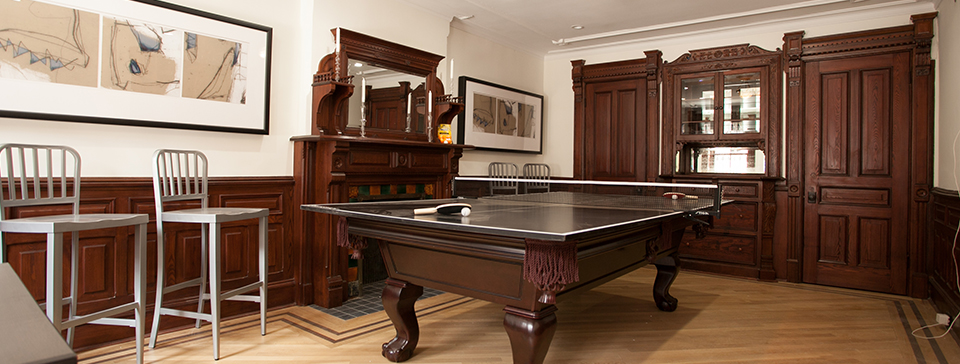
View the floor plans for Hancock Street




 201 366 8692
201 366 8692








